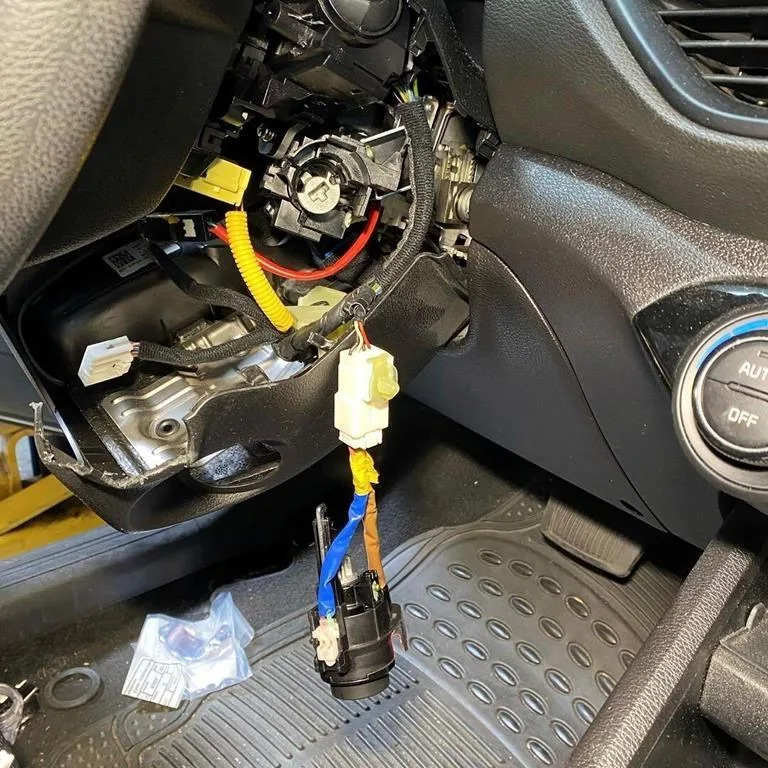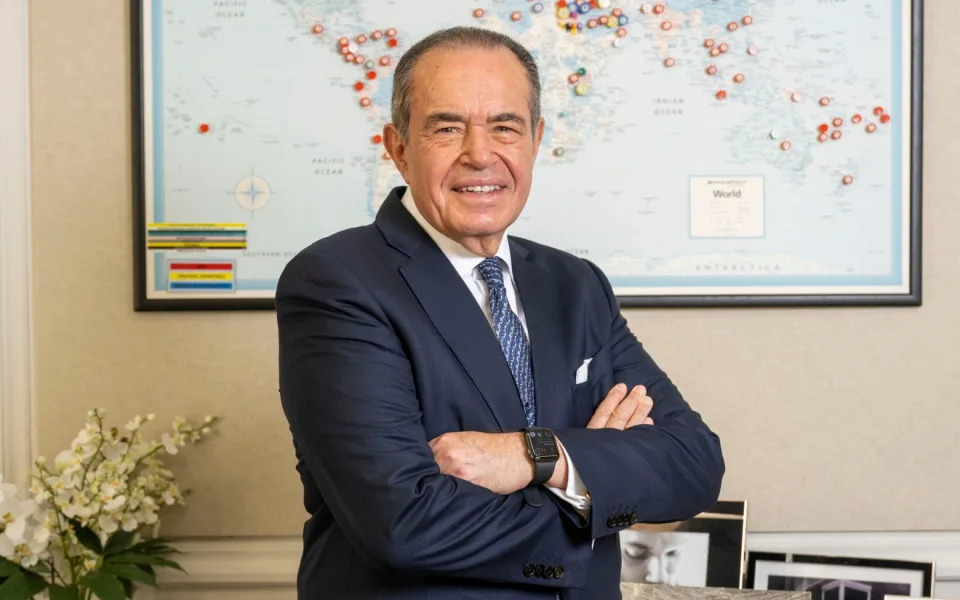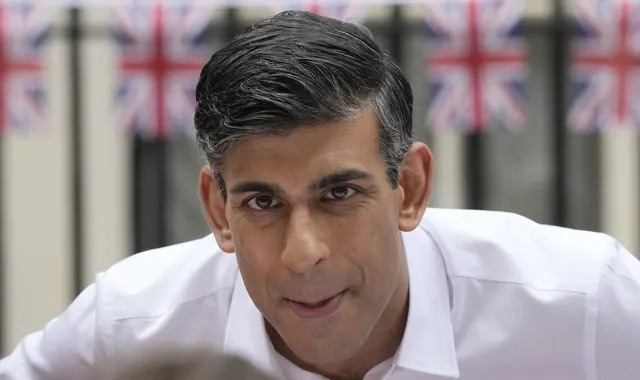Mon, May 22, 2023

NEW YORK (AP) — Jonnifer Neal's Kia was stolen twice in one day — first from in front of her Chicago home and later from outside the mechanic shop where she took it to get fixed.
But Neal’s ordeal didn’t end there. After her car was recovered a month later, she was stopped by police twice coming home from work because a police error caused the Optima to remain listed as stolen. The same error resulted in officers waking her up at 3 a.m. another night. On yet another occasion, a swarm of officers pulled her over as she was traveling to Mississippi, handcuffing and placing her in the back of a cruiser for more than an hour.
The Kia now sits in her garage.
“It’s been a few months, but honestly I’m still nervous,” Neal said. “I drive that car maybe once in a blue moon and I loved that car.”
Neal’s story is one of thousands from Kia and Hyundai owners across the country whose cars were stolen or damaged in the past two years.
The sharp uptick has been linked to viral videos, posted to TikTok and other social media platforms, teaching people how to start the cars with USB cables and exploit a security vulnerability in some models sold in the U.S. without engine immobilizers, a standard feature on most cars since the 1990s preventing the engine from starting unless the key is present.
But unlike some social media-driven trends that seemingly disappear just as police get a handle on them, the car thefts have continued. Hyundai has tried to work with TikTok and other platforms to remove the videos, but as new ones surface fresh waves of thefts occur, illustrating the lingering effects of dangerous content that gains traction with teens looking for ways to go viral.
It’s a phenomenon known as performance crime. Police departments in a dozen cities have said it factors into an increase they’ve seen in juveniles arrested or charged with car thefts. Still, criminology experts caution that the role teens are playing in the theft increases — which began during the pandemic and aren't limited to Kia and Hyundai — may be artificially inflated because teenagers inexperienced at crime are more likely to be caught.
Attorneys general from 17 states have called on federal regulators to issue a mandatory recall, arguing the voluntary software fixes issued by the companies aren't enough. Multiple cities including Baltimore, Milwaukee and New York have filed or announced plans to join legal action against the automakers, which also are facing class-action and civil lawsuits from consumers like Neal. One such lawsuit was settled for roughly $200 million last week.
The National Highway and Safety Administration blames the trend for at least 14 crashes and eight fatalities, but lawyers suing the carmakers say the number is likely much higher.
Morgan Kornfeind was driving to a yoga class in Portland, Oregon, at the end of March when a man in a stolen Kia barreled into her as he drove the wrong way while fleeing police. The 25-year-old suffered lacerations, broken bones and extensive injuries to her leg. She needed surgery and attends multiple medical appointments every week.
“I’m unable to work my job that I love dearly. I’m unable to practice yoga or walk my dogs. I’ve missed planned trips with friends because of my ongoing rehab. The idea of ever driving again causes me great distress,” she wrote in a statement.
Earlier this month in Milwaukee, a stolen Kia collided with a school bus, leaving a 15-year-old who was hanging out the window in critical condition. Police later arrested four 14-year-olds, one of whom allegedly was driving.
Many of the calls for accountability have been directed at the automakers. MLG Attorneys at Law, a California law firm specializing in automotive defect lawsuits, has received more than 4,000 inquiries from victims like Kornfeind.
“And the amazing thing is it’s not slowing down,” said Randy Shrewsberry, MLG chief strategy officer.
But some police departments, victims and the automakers also point the finger at social media platforms. Videos posted on YouTube in recent weeks show people breaking into various cars or using a USB cable to hotwire cars. The company removed the videos when notified by The Associated Press.
YouTube removed videos depicting what's known as the “Kia Challenge” in recent months, spokesperson Elena Hernandez said in a statement, while stressing the company considers context when making those decisions.
“We might allow some videos if they’re meant to be educational, documentary, scientific, or artistic,” Hernandez wrote.
In a statement, a TikTok spokesperson pushed back on assertions that many of the dangerous challenges mentioned in news reports had reached mass popularity on the platform.
“There is no evidence any of these challenges ever ‘trended’ on TikTok, and there is a clear documented history that many challenges falsely associated with TikTok pre-date the platform entirely,” TikTok spokesperson Ben Rathe said.
Hany Farid, who stepped down in January from TikTok’s U.S. content advisory council because he felt unable to affect change, said TikTok tends to be defensive when criticized for its content moderation practices. He acknowledged the challenge of knowing where some trends originate because content moves quickly between platforms.
“It’s very much a Whack-A-Mole problem,” said Farid, a digital forensics expert at the University of California, Berkeley. “Because these platforms were not designed to be safe for kids, or for anybody."
TikTok's enforcement report from the last three months of 2022 showed 5% of the videos the company removed were due to dangerous acts and challenges, with 82% removed within 24 hours.
Like many social platforms, TikTok screens content with a combination of artificial intelligence and human moderators who try to catch whatever AI might miss. A spokesperson said it's easier for technology to spot certain violations, like nudity, than things like teens breaking into cars. The human moderators are a second level of screening when content is questionable.
Users also sometimes subvert the platform's controls by misspelling or changing words in hashtags. Some see that as a loophole deserving attention. TikTok says it monitors misspellings and touted the content being forced away from mainstream hashtags as a success.
Meta, which owns Facebook and Instagram, did not reply to a request for comment on how it screens for similar videos.
While the Kia Challenge is the social media crime trend of the moment, it's not the first. And, experts say, it's not indicative of social media creating a paradigm shift in criminal activity.
In LaGrange, Georgia, a city of about 31,000 people close to the Alabama border, before the Kia Challenge the police dealt with fallout from the “Orbeez Challenge,” which directed people to use toy or airsoft guns to shoot small, gel-filled balls called Orbeez at strangers or friends. Lt. Mark Cavender said officers were alarmed when they saw middle schoolers using toy guns painted black to look like real weapons, immediately putting out warnings to stop.
Michael Scott, director of the Problem-Oriented Policing Center at Arizona State University, said social media hasn't completely changed crime.
“Social media seems to be a radically new thing, but the only new things are the speed and the breadth,” Scott said.
There are also plenty of examples of trends in criminal activity spreading before social media existed as it does now. Before there were “rob mobs” there was “wilding” in the 1980s, in which groups of people gathered in public to cause chaos, vandalize or steal property. And before the Kia Challenge, there were groups of teens in the 1990s who figured out they could steal General Motors vehicles using a screwdriver.
Scott, who was an officer in the St. Louis Police Department at the time, said the carmaker was slow to act when officers noticed the uptick in their cars being stolen.
“Even without social media, that technique spread around the country,” he said. “What social media changed, was it sped up the process. Before, you had to know or meet someone who had figured out that all you needed was a screwdriver.”
___
Lauer reported from Philadelphia.
Claudia Lauer And Haleluya Hadero, The Associated Press






